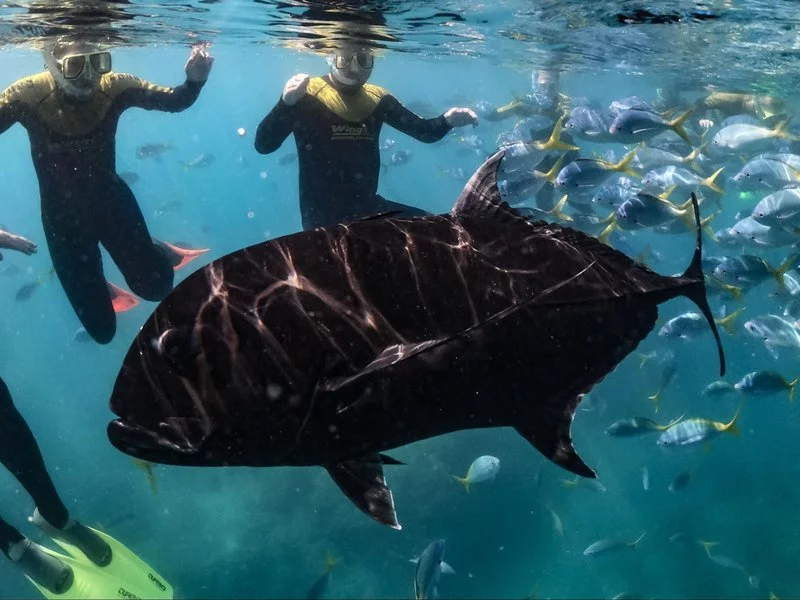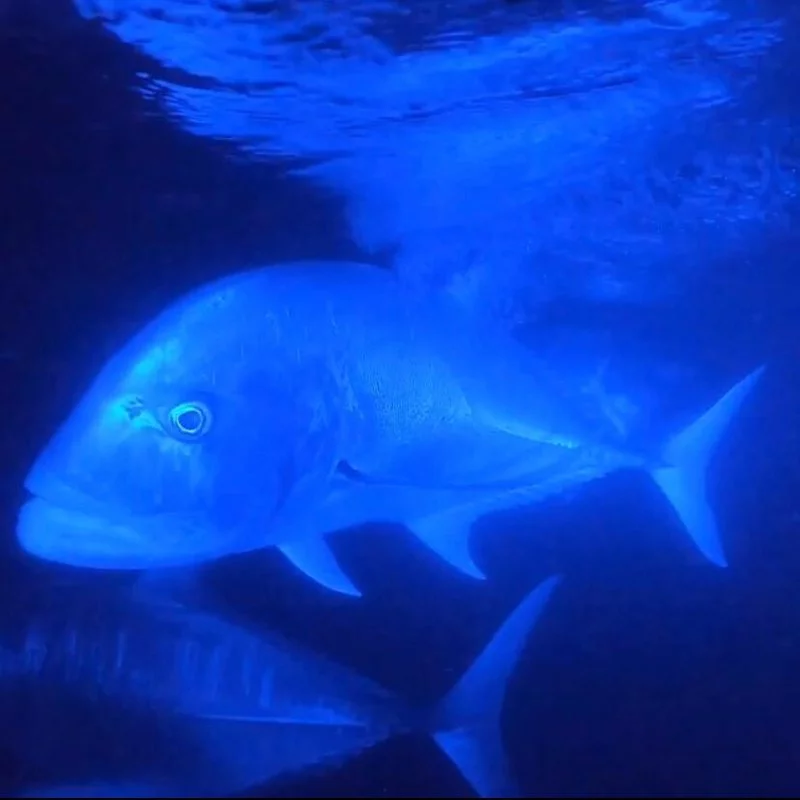The giant trevally, as its name suggests is a large fish in the jack family which includes fish like the amber jack and rainbow runners. Most species in this family are large, strong, fast swimming predatory fish. This makes them target fish for sports fisherman around the world and the giant trevally or GT, as it is commonly known is one of the most popular. The Great Barrier Reef, our backyard here in the Whitsundays, is home to one of the catch and release fisheries for the giant trevally and is considered one of the top locations among international sport fishing circles.
This large species of fish can be found throughout tropical waters in both the Indian and Pacific oceans, including the coasts of countries including South Africa, Australia and Japan. Although they are considered semi-pelagic the giant trevally is not fussy and will inhabit a wide range of habitats. They are commonly found in coastal waters living around coral and rocky reefs close to shore, lagoons, estuaries, tidal flats and deep drop offs at the edges of reefs. As juveniles they prefer the shallower inshore environment and as they mature will gradually start to move out to inshore reefs and then onto deeper outer reefs and drop offs.
These giants are the largest species of trevally and the fifth largest species in the jack family. They can grow to almost 2 meters in length and weigh around 80 kilograms. These guys have thick muscular bodies with a steep sloping foreheadJuveniles of this species have a light grey/silver colouring sometimes having black speckling across the body. As adults males can develop an all over jet black colour. Giant trevally reach sexual maturity fairly quickly at around 3-4 years and then continue to grow rapidly. They are thought to live to around 24-25 years in the wild.

Giant trevally are also apex predators in the marine world and enjoy a diet consisting of a range of different organisms. The bulk of their diet is made up of other fish however they do regularly feed on crustaceans such as crabs, cephalopods like squid and cuttlefish and other molluscs. They have also adopted a range of different hunting strategies in different regions across the world. They can hunt both individually or as a school and have even been observed using sharks and seals as a means to get an easy meal. They follow the other predators to ambush the escaping prey. One population of trevally was even observed and filmed hunting turns who flew too close to the surface of the water. This incredible footage can be seen in David Attenborough’s Blue Planet 2.
As mentioned above the giant trevally is considered an extremely popular gamefish and it is also an important species in commercial fishing industries around the world, particularly in Hawaii. In Hawaii this species is known as ulua and is a significant and an important part of the culture, seen as a god. Hawaii also has the best kept and most accurate statistics for the fishery of this species however not all countries have followed suit in this and an accurate amount for fish taken in fisheries across the world is not known. Here in Australia The Giant Trevally is mainly targeted for its gamefish status, anglers come from all over the world to experience the fighting power of this fish and gain the bragging rights of landing one.
In the Whitsundays the giant trevally are a common site around the islands, in particular in Manta Ray Bay on Hook Island. In this bay there are resident giant trevally, among hundreds of other fish, who are accustomed to human presence so will have no qualms about swimming up close and personal with people as they enjoy a snorkel at the popular site. They are also quite active at night time and can be seen hunting smaller fish in the blue lights at the back of boats anchored for the night. The Wings vessels have these underwater blue lights and the nighttime show that the trevally and other marine critters put on in them is a trip highlight.



